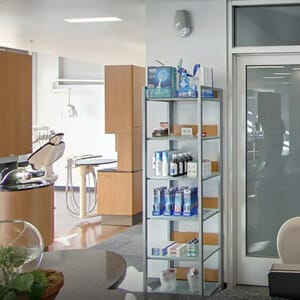“Do they watch me during a sleep study?” This question, coupled with the natural anxiety of being observed while asleep, often deters many from seeking the necessary diagnosis and treatment.
This blog post aims to demystify the sleep study process, clarify who exactly is ‘watching’ you, and why it’s essential in diagnosing sleep disorders.
So, if you’ve been grappling with these concerns, rest assured (pun intended), let’s dive into the nocturnal world of sleep studies and unravel these mysteries together.
Understanding What a Sleep Study Is

A sleep study, or polysomnography, is a non-invasive, overnight exam that allows doctors to monitor you while you sleep to see what’s happening in your brain and body.
The main purpose of a sleep study is to identify potential sleep disorders, which can range from insomnia to sleep apnea, restless leg syndrome, and narcolepsy. During these hours of slumber, symptoms become more noticeable and can be accurately assessed, making a sleep study a crucial diagnostic tool.
The Different Types of Sleep Studies
There are several different types of sleep studies, each designed to diagnose different conditions or monitor various aspects of sleep. These include:
- Polysomnography (PSG): This is the most common type of sleep study used to diagnose conditions like sleep apnea, insomnia, or periodic limb movement disorder. The test records your brain waves, oxygen levels, heart rate, breathing, and eye and leg movements during the study.
- Home Sleep Apnea Test (HSAT): This is a simplified version of the PSG that focuses specifically on diagnosing obstructive sleep apnea. It’s done at home using portable equipment to record heart rate, airflow, breathing effort, and oxygen levels.
- Multiple Sleep Latency Test (MSLT): This test diagnoses narcolepsy and measures how quickly you fall asleep in quiet situations during the day.
- Maintenance of Wakefulness Test (MWT): Unlike the MSLT, this test measures your ability to stay awake and alert during the day. It’s often used to see how well treatment for a sleep disorder is working.
The Sleep Study Process

Before you walk into the sleep center for your study, there are a few preparations you need to consider:
- Medical History and Sleep Diary: You will be asked to provide a complete medical history and maintain a sleep diary for a week or two. This helps in identifying patterns and potential issues related to your sleep.
- Avoid Certain Substances: It’s usually recommended to avoid caffeine and alcohol on the day of the test, as they can influence the results.
- Bring Familiar Items: You may be advised to bring items that help you sleep, like a favorite pillow or book.
- Prepare for Overnight Stay: Pack an overnight bag as if you were staying in a hotel. Include toiletries, a change of clothes, and anything else you might need.
What Happens During a Sleep Study Night
Once you’re prepared, it’s time to know what to expect on the night of the sleep study.
- Setup: You’ll be shown a private room when you arrive at our sleep center. A technician will attach sensors to your body to monitor your sleep throughout the night. These sensors are painless and designed to be as unobtrusive as possible.
- Monitoring: Once everything is set, it’s time for bed. As you sleep, the sensors record a plethora of data, including your brain activity, heart rate, blood oxygen levels, breathing patterns, and eye and limb movements.
- Post-Sleep Procedures: In the morning, you’ll be woken up, and the sensors will be removed. You can then go about your day usually.
Keep in mind that during the entire process, our Dr. Sharad Pandhi will prioritize your comfort and privacy.
Whether it’s your first sleep study or a follow-up test, our goal is to make the experience as comfortable and stress-free as possible, providing you with the insights you need to get a better night’s rest.
Who Watches You During a Sleep Study

The individuals who observe you during a sleep study are called sleep technologists. These are skilled healthcare professionals trained in sleep medicine. Their role is to set up the monitoring equipment, conduct the study, and ensure your comfort throughout the night.
Sleep technologists don’t just ‘watch’ you sleep. Instead, they monitor vital aspects of your sleep to detect potential disorders, such as the following:
- Brain Waves: To identify different sleep stages and detect abnormalities.
- Oxygen Levels in Your Blood: Low levels may indicate issues like sleep apnea.
- Heart Rate: Changes can signal conditions like sleep-related cardiac disorders.
- Breathing: Irregularities can suggest a variety of sleep disorders.
- Eye Movements: This identifies REM (Rapid Eye Movement) sleep.
- Leg Movements: Frequent movement could indicate conditions like restless leg syndrome.
During the study, video monitoring is also used. This helps the technologists see if you’re tossing and turning or if there are physical indications of a sleep disorder, like sleepwalking.
However, the focus is on monitoring sleep patterns rather than individual actions.
Addressing Privacy Concerns
Your privacy is paramount to us. All monitoring is done remotely from a separate room; video monitoring only captures you within the sleeping area. Bathrooms and changing areas are strictly off-limits to cameras.
Rest assured, the process is designed with the utmost respect for your privacy, focusing solely on gathering necessary health data.
Remote Sleep Studies: Are You Still Watched?

If sleeping in an unfamiliar environment makes you uncomfortable, you’ll be pleased to know that sleep studies can also be conducted in your home.
But how do these at-home sleep studies work, and are you still being watched?
Introduction to At-Home Sleep Studies
At-home sleep studies, also known as Home Sleep Apnea Tests (HSATs), offer a convenient way to diagnose sleep disorders like obstructive sleep apnea. You’ll be provided with a device to take home, which you’ll use to collect sleep data during the night.
How At-Home Sleep Studies Are Monitored and Data Collected
With at-home sleep studies, you won’t be watched in real-time as you sleep. Instead, you’ll wear a device that collects data while you sleep. This usually includes measurements of your heart rate, blood oxygen levels, airflow, and breathing effort.
In the morning, you return the device to the sleep center, where sleep professionals analyze the data. While there is no real-time monitoring, every aspect of your sleep critical to diagnosing sleep disorders is recorded for analysis.
Comparing In-Lab and At-Home Sleep Studies
While both in-lab and at-home sleep studies aim to diagnose sleep disorders, there are some key differences:
- Comprehensiveness: In-lab sleep studies are more comprehensive as they monitor more aspects of sleep, including brain waves and leg movements, which are typically not observed in at-home tests.
- Environment: Some people may find it easier to sleep in their own bed during an at-home study, while others may prefer the controlled sleep lab environment.
- Support: In-lab sleep studies have the advantage of immediate help from a sleep technologist, which isn’t available during at-home research.
Deciding between an in-lab or at-home sleep study depends on your individual needs, the specific sleep issues you’re facing, and the recommendation of your healthcare provider. Our team is here to provide professional advice and support, ensuring you choose the option that best suits your needs for a path to better sleep.
What to Expect After a Sleep Study

Right after the sleep study, the sleep technologist will typically give you a brief overview of how the night went. However, they will need more time to provide a detailed interpretation of your results – that comes later.
Timeline for Getting Results
The recorded data from your sleep study is analyzed by a sleep specialist, which typically takes about two weeks. This time frame allows for a thorough review of the hours of data collected, ensuring nothing is missed.
Next Steps Based on Results
Once your results are ready, you’ll have a follow-up appointment with your healthcare provider. They’ll go over your results with you, explaining any sleep disorders that were detected, their severity, and potential treatment options.
If a sleep disorder is identified, you may be referred to a sleep specialist for further consultation.
Your treatment plan may include the following:
- Lifestyle changes
- Medication
- Use of an oral appliance while sleeping
- Even cognitive-behavioral therapy for insomnia (CBTI)
Sometimes, a follow-up sleep study may be needed to confirm a diagnosis or adjust a treatment plan. Regardless of the outcome, our team will ensure you’re equipped with the knowledge and resources to embark on your journey toward improved sleep health.
Remember, a sleep study is more than just a single night of observation; it’s the first step toward understanding and improving your sleep. Our team is dedicated to supporting you through this process, providing the expert care and guidance you need every step of the way.
Wrapping Up: Navigating Your Sleep Study
Decoding the question, “Do they watch you during a sleep study?” unveil the dedication and professionalism of the sleep specialists involved. It’s clear that the goal is not just to ‘watch’ but to understand your sleep patterns and detect potential disorders. This process allows for precise, tailored solutions to help improve your sleep health.
Whether you opt for an in-lab study or an at-home sleep test, know that your comfort, privacy, and health are our top priority. So, if you’re interested in scheduling your sleep study or need more information, our friendly team is ready to help guide your journey toward better sleep.







